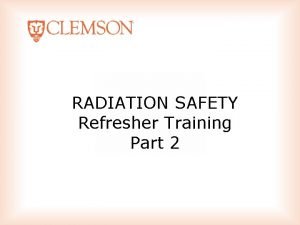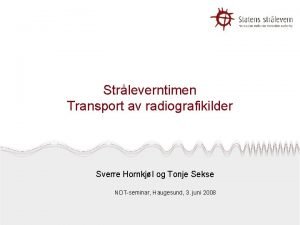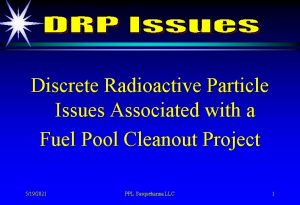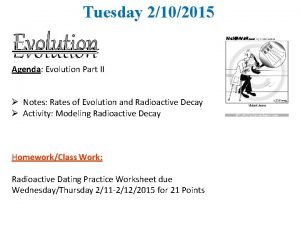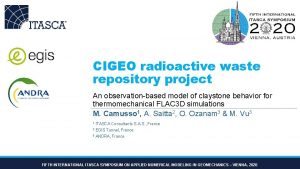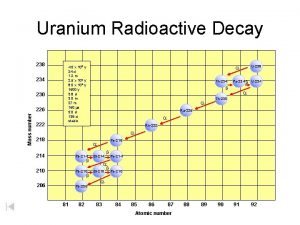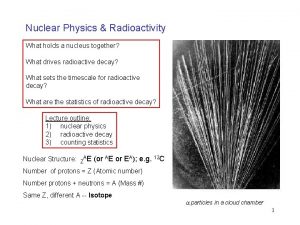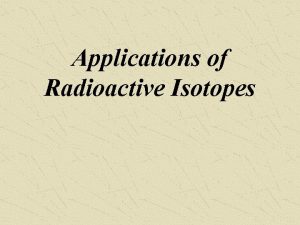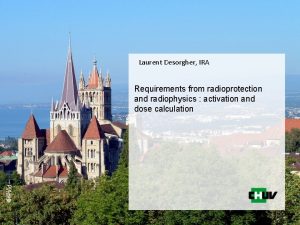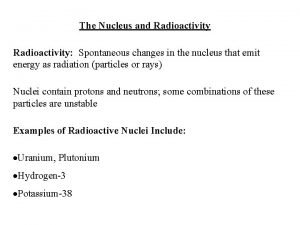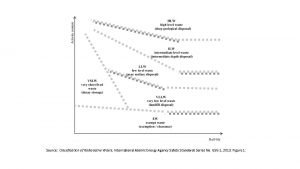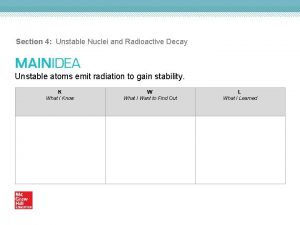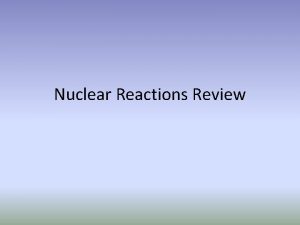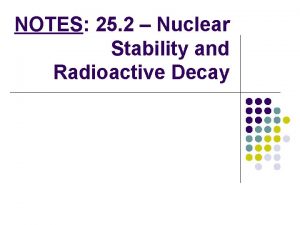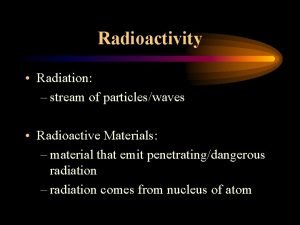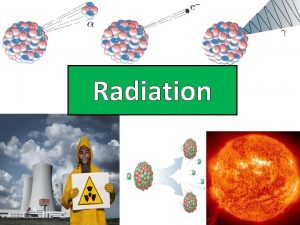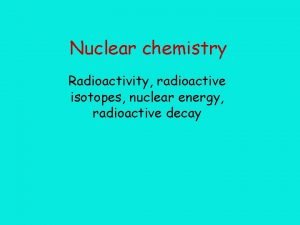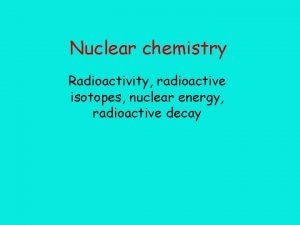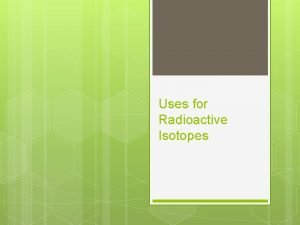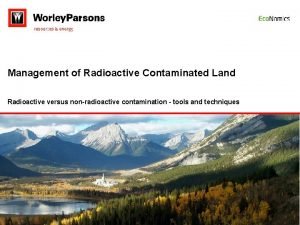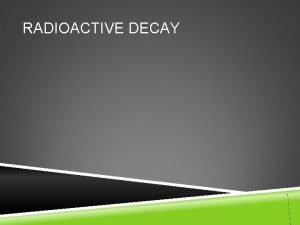A Radiation Primer radiation radioactive material What are



















- Slides: 19

A Radiation Primer radiation … radioactive material What are they? exposure … contamination Are they the same?

Radioactivity Spontaneous emission of radiation from the nucleus of an unstable isotope Disintegration Decay

Demonstrate Decontamination Any Volunteers?


Energy

Penetration Abilities Especially damaging to internal tissues if inhaled or swallowed Damaging to internal tissues if inhaled or swallowed and can cause external skin burns Damaging to tissues externally and internally

Common Radioactive Nuclides • • • Nuclear medicine: Iodine-131 Radiotherapy: cobalt-60 Satellite power: plutonium-238 Nuclear power: uranium-235 Our body: potassium-40 Our water: radium-226

Unit prefixes from Tera (1012) to pico (10 -12) Radiation Units q Amount of radioactivity § Curie (Ci), Becquerel (Bq) q Ambient radiation levels § Roentgen per hour (R/h, rem per hour (rem/h) q Radiation Dose § Rad, rem, Gray (Gy), Sievert (Sv)

Radioactive Contamination • What if you ingested – 12 Bq (disintegrations per second)? – 5500 Bq? • The point is not to trivialize radioactivity, but to put it in perspective.

Average Annual Radiation Exposures: 6. 2 m. Sv = 620 mrem Consumer products, occupational 2% Medical 48% ? Natural background 50% Source: NCRP Report No. 160, Ionizing Radiation Exposure of the Population of the United States (2009)

Typical Doses (m. Sv) Airport Screening NY to London by air Chest X-Ray Natural bkgd. (annual) CT Scan -Abdomen Occupational annual limit 50% survival (whole body) Radiotherapy (tumor, partial) 1 m. Sv = 100 mrem 0. 0001 0. 05 0. 1 3 10 50 4, 000 80, 000

Radiation Protection • Time • Distance • Shielding • Evacuation • Sheltering • Medical countermeasures Guiding principle for controlling exposures: ALARA As Low As Reasonably Achievable

Review Fundamentals Difference between: – Radioactive material – Radiation Difference between being: – Contaminated – Irradiated (exposed) External & Internal

Summary: Key Points • Radiation types: alpha, beta, gamma • Radiation and radioactivity are part of our natural environment • Radioactive contamination is not immediately life threatening. • Decontamination is relatively simple. • Radiation can be readily detected.

Summary: Key Points • Dose Units: • Rem – in the U. S. • Sievert (Sv) - rest of the world • Radiation can: • kill in short term • cause cancer in long term, or • have NO EFFECT • It is all about dose!

Important Contact! • Know the contact information for your state radiation control program. This office is vital in both planning for and responding to a nuclear or radiological incident. www. crcpd. org/Map/map. html

Radiological Terrorism: A Toolkit for Emergency Services Clinicians Resources for Clinicians § § § § JIT Training Pocket Guides Radiation Triage Chart Fact Sheets Webcasts Self-study Programs Psychological First Aid in Radiation Disasters http: //www. emergency. cdc. gov/radiation/

Radiological Terrorism: A Toolkit for Public Health Professionals Resources for Public Health § § § § § v. CRC Population Monitoring Guide EPA Risk Communication Guide Contaminated Decedents Guide Radiation Survey DVD Webcasts Fact Sheets Self-study Programs Psychological First Aid in Radiation Disasters http: //www. emergency. cdc. gov/radiation/

Questions? Armin Ansari 770 -488 -3654 AAnsari@cdc. gov For more information please contact Radiation Studies Branch, CDC 4770 Buford Highway NE, Atlanta, GA 30341 Telephone, 1 -770 -488 -3800 E-mail: rsbinfo@cdc. gov Web: emergency. cdc. gov/radiation The findings and conclusions in this report are those of the authors and do not necessarily represent the official position of the Centers for Disease Control and Prevention.
 Insidan region jh
Insidan region jh Radioactive refresher cocktail
Radioactive refresher cocktail Un3332 radioactive material
Un3332 radioactive material Bentuk noktah
Bentuk noktah Discrete radioactive particles
Discrete radioactive particles Radioactive dating worksheet
Radioactive dating worksheet Radioactive flac
Radioactive flac Is lead radioactive
Is lead radioactive Most unstable radioactive element
Most unstable radioactive element Beta minus decay
Beta minus decay Radioactive decay law
Radioactive decay law Applications of radioisotopes
Applications of radioisotopes Radioactive decay formula
Radioactive decay formula Cobalt-60 beta decay equation
Cobalt-60 beta decay equation Radioactive defination
Radioactive defination Radioactive nuclear waste
Radioactive nuclear waste How unstable atoms gain stability
How unstable atoms gain stability Radioactive materials have unstable
Radioactive materials have unstable Half life example
Half life example Natural vs artificial radioactivity
Natural vs artificial radioactivity

